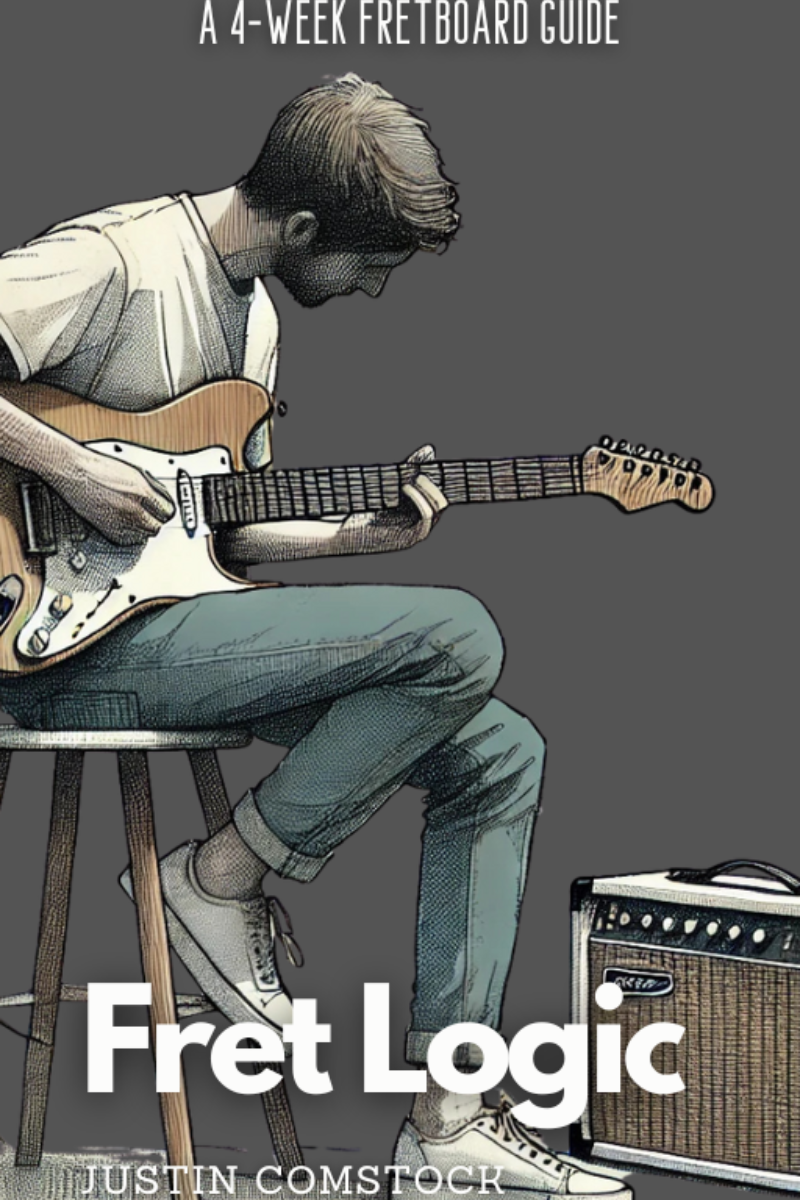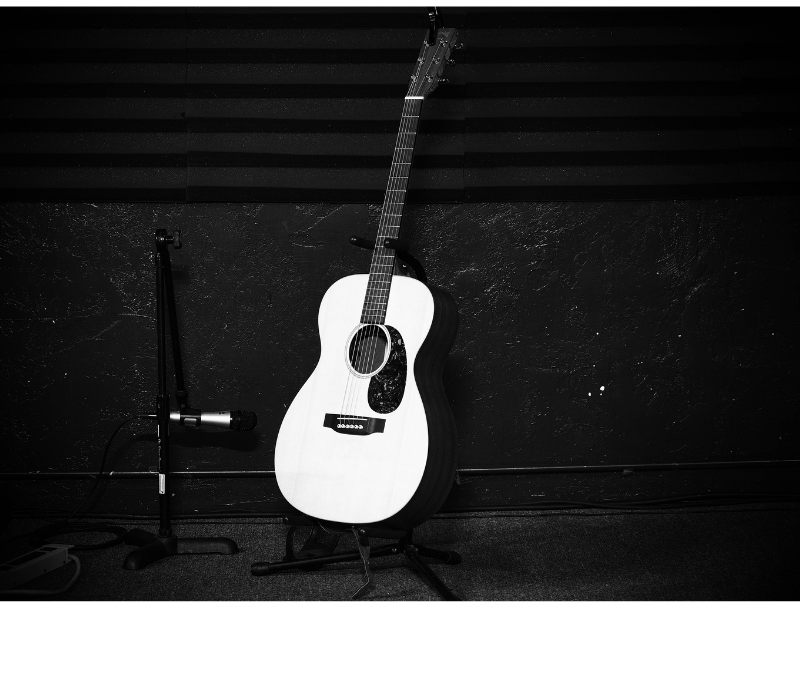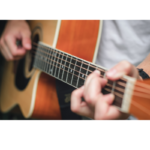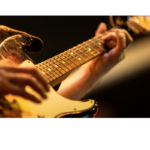Let’s get brutally honest: Most beginners wash out because they try to gobble up every chord shape, scale pattern, and theory lesson in the first month. It’s like trying to memorize a phone book before you’ve learned the alphabet. Start with the easiest guitar chord to learn
You don’t need complexity. You need clarity.
And clarity starts with one powerful, easy guitar chord that sounds good every time you strum it.
Today, you’ll discover:
✅ The easiest guitar chord to learn—one that unlocks real songs fast
✅ 5 other beginner guitar chords that actually sound professional
✅ Easy chord progressions to build confidence
✅ Practice methods that make switching chords second nature
✅ A proven fretboard learning system (blowing up on Kickstarter)
✅ A supportive community where you can share your progress
So grab your guitar, take a deep breath, and get ready to change how you think about learning music forever.

❌ Stop Guessing. Start Shredding.
If you’re still fumbling through scale patterns and box shapes… it’s costing you progress.
FretDeck™ is the no-fluff system that shows you exactly how to master the fretboard—fast. Early access.
⚡️ This isn’t for dabblers. It’s for players who want results.
👉 Click here to join the pre-launch now
Early access. Limited rewards. Don’t wait.
🎯 The Easiest Guitar Chord to Learn (And Why It Matters)
The chord?
E Minor.
No theory rabbit holes, no weird stretches. Just a shape you can learn in 60 seconds—and use in thousands of songs.
Why E Minor?
1️⃣ It Uses All Six Strings: Unlike partial chords, E minor sounds big, warm, and full.
2️⃣ It Takes Two Fingers: You can set it up without feeling like your hand’s in a pretzel.
3️⃣ It’s Versatile: You’ll hear it in everything from The Rolling Stones to modern indie folk.
Here’s how to play E Minor:
- Place your middle finger on the 2nd fret of the A string (5th string).
- Place your ring finger on the 2nd fret of the D string (4th string).
- Strum all six strings.
That’s it. You’re officially making music.
Why Easy Guitar Chords Work (When Complicated Lessons Don’t)
Complexity kills conversion. In guitar, complexity kills momentum.
If you try to memorize 50 chords before you can switch between 2, you’ll get overwhelmed and stop showing up.
Here’s why starting with easy guitar chords is a power move:
✅ You build real-world confidence faster.
✅ You avoid information overload.
✅ You can start playing songs, not just exercises.
✅ You wire your fingers to move fluidly.
This isn’t “making it simple.” It’s strategic progress.
🎵 5 More Beginner Guitar Chords That Actually Sound Good
Once you’ve mastered E Minor, expand your toolkit with these five chords. Each is practical, satisfying, and used in thousands of songs:
1️⃣ G Major
The King of Singalongs.
From country ballads to arena rock, G Major is everywhere.
- Place your middle finger on the 3rd fret of the low E string.
- Index finger on the 2nd fret of the A string.
- Ring finger on the 3rd fret of the high E string.
- Strum all six strings.
2️⃣ C Major
Every pop song’s secret weapon.
Warm and rich, C Major sounds polished even in simple progressions.
- Ring finger on the 3rd fret of the A string.
- Middle finger on the 2nd fret of the D string.
- Index finger on the 1st fret of the B string.
- Strum from the A string down.
3️⃣ D Major
Bright and clear—essential for folk, rock, and country.
- Index finger on the 2nd fret of the G string.
- Middle finger on the 2nd fret of the high E string.
- Ring finger on the 3rd fret of the B string.
- Strum from the D string down.
4️⃣ A Minor
Emotional and introspective.
- Middle finger on the 2nd fret of the D string.
- Ring finger on the 2nd fret of the G string.
- Index finger on the 1st fret of the B string.
- Strum from the A string down.
5️⃣ D Minor
Dramatic and haunting.
- Index finger on the 1st fret of the high E string.
- Middle finger on the 2nd fret of the G string.
- Ring finger on the 3rd fret of the B string.
- Strum from the D string down.
👉 Pro Tip:
You don’t need 50 chords to sound legit. You need these 6, and you need to switch between them confidently.
🎯 The Biggest Roadblock? Switching Chords Smoothly.
If you know the shapes but freeze when changing chords, you’re not alone.
Most beginners quit here. But you don’t have to.
Here’s how to train your hands to move like a pro:
1️⃣ Practice Slow Transitions
Speed is a byproduct of accuracy.
Focus on perfect placement first, then increase tempo.
2️⃣ Use Pivot Fingers
Many chords share fingers on common frets.
Keep them anchored to reduce motion.
3️⃣ Loop Progressions
Set a timer for 5 minutes and loop G–C–D–G without stopping.
This builds muscle memory fast.
4️⃣ Keep Strumming
Even if your fingers fumble, keep your right hand moving.
Rhythm matters more than perfection in the early stages.
🎵 5 Easy Guitar Chord Progressions to Sound Like You’ve Been Playing for Years
Want to play real music today?
Use these proven progressions:
✅ G – C – D – G
The backbone of countless classic rock hits.
✅ C – G – Am – Fmaj7
Warm and emotive. Perfect for ballads.
✅ E – A – B7 – E
A bluesy shuffle you’ll hear in every bar.
✅ D – A – Bm – G
Folk and country staple.
✅ A – D – E – A
Bright and uplifting. Great for jam sessions.
Practice each progression for 5–10 minutes.
Loop them until you can transition without thinking.
🎸 Ready to Level Up? FretDeck™ Is Your Shortcut.
Learning guitar shouldn’t feel like decoding ancient hieroglyphics.
FretDeck™ is the first visual learning system that shows you how to navigate the entire fretboard—without overwhelm.
🎯 What’s Inside FretDeck™?
- 60 pentatonic scale cards in every key
- Chord shapes you’ll actually use
- Real-world examples to connect scales to music
- Practice prompts that get you playing, not memorizing
Instead of slogging through YouTube randomness, you get a clear roadmap—plus a tactile, card-based system that makes learning feel effortless.
💡 Why It Works
- Visual learners see exactly how notes connect.
- Tactile learners build muscle memory through repetition.
- Busy players can grab a card, practice for 10 minutes, and see progress.
This isn’t another online course you’ll abandon after two lessons.
✅ Early backers on Kickstarter get bonuses:
🎁 Digital video lessons
🎁 A chord progressions expansion deck (stretch goal)
🎁 Access to our private Discord community: Guitar Freaks Hangout
👉 Claim Your Early Access to FretDeck™

❌ Stop Guessing. Start Shredding.
If you’re still fumbling through scale patterns and box shapes… it’s costing you progress.
FretDeck™ is the no-fluff system that shows you exactly how to master the fretboard—fast. Early access.
⚡️ This isn’t for dabblers. It’s for players who want results.
👉 Click here to join the pre-launch now
Early access. Limited rewards. Don’t wait.
🎧 Join Guitar Freaks Hangout: The Community You’ve Been Missing
Learning guitar alone? It’s easy to stall out.
Guitar Freaks Hangout is your backstage pass to a community of players who get it.
Inside, you’ll:
✅ Share your wins (and frustrations)
✅ Ask questions about tone, theory, and technique
✅ Join live jams and workshops
✅ Get early access to new FretDeck™ tools
PLUS: When you join today, you’ll unlock Fret Logic, our 80-page guide to fretboard mastery—free.
👉 Join the Hangout and Grab Your Free Copy

Join Guitar Freaks Hangout on Discord! 🎸
Get Fret Logic FREE!
Join the Guitar Freaks Hangout Discord and get exclusive access to my entire e-book, Fret Logic! Master the fretboard and elevate your solos with this comprehensive guide.
👉 Don’t miss out—join now and download your free copy!
🎯 Final Thoughts: Start With One Chord. Build Your Story.
The easiest guitar chord to learn isn’t just about convenience. It’s about momentum.
You strum E Minor and feel something shift.
Suddenly, you’re not just holding a guitar. You’re playing music.
From there, everything else is a series of simple steps:
✅ Add one new chord.
✅ Practice switching.
✅ Learn a progression.
✅ Play along to your favorite song.
That’s it.
You can do this.
🚀 Next Steps (If You’re Ready to Stop Guessing)
🔗 Unlock the Fretboard with FretDeck™
(Serious players only.)
🎸 Join Guitar Freaks Hangout on Discord
(Get Fret Logic eBook free.)
👉 Explore More Simple Guitar Chords
(10 shapes every beginner must know.)
🎯 One Final Tip
Don’t aim for perfect. Aim for progress.
Every great player started exactly where you are—one chord at a time. Easiest guitar chord to learn
You’ve got this.










